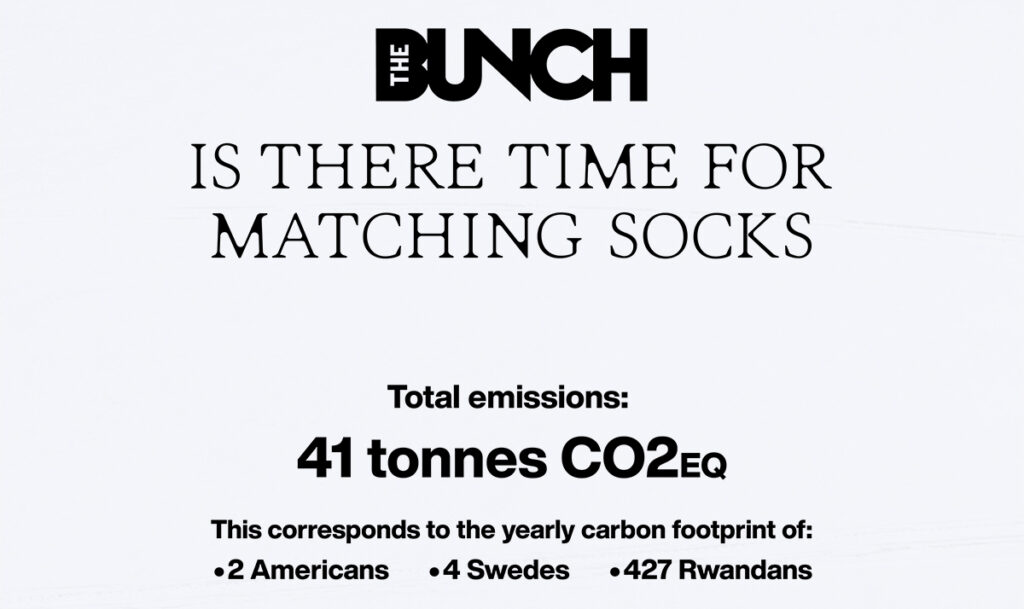What’s the carbon footprint from film production and the movie industry? Intrigued by finding out the answer, we at GoClimate partnered up with some of the best freeskiers in the world, The Bunch, to calculate the carbon footprint of their seventh movie Is there time for matching socks. And started to dig into the emissions of the world of film making.

Findings – carbon emissions from creating films
What we found out is that film productions in general do unfortunately not map their carbon footprint. Or, in the cases where the carbon footprint has been calculated, the data has not been made public.
According to a Swedish study all big studios in the US track their carbon footprint, with a couple of them making it public. But, when we dug deeper into this, looking at the carbon footprint of Disney Studios in particular, only the emissions from The Walt Disney Company as a whole is presented. Numbers related to the film production are not separated and publicly available.
According to the Guardian (2020) the average film is estimated to produce 500 tonnes of CO2eq. The detailed data from the Swedish series Bäckström shows a carbon footprint of 240 tonnes CO2 for the full production, 40 tonnes per episode of 45 minutes.
We found data from a few recent wintersport films. Burton’s production, One World, had for example a carbon footprint of 1060 tonnes.
Our calculations of The Bunch film production Is there time for matching socks ended up at 41 tonnes. To find out how they manage to keep the emissions so low compared to other films, click here. The full climate report for the film can be found here.
